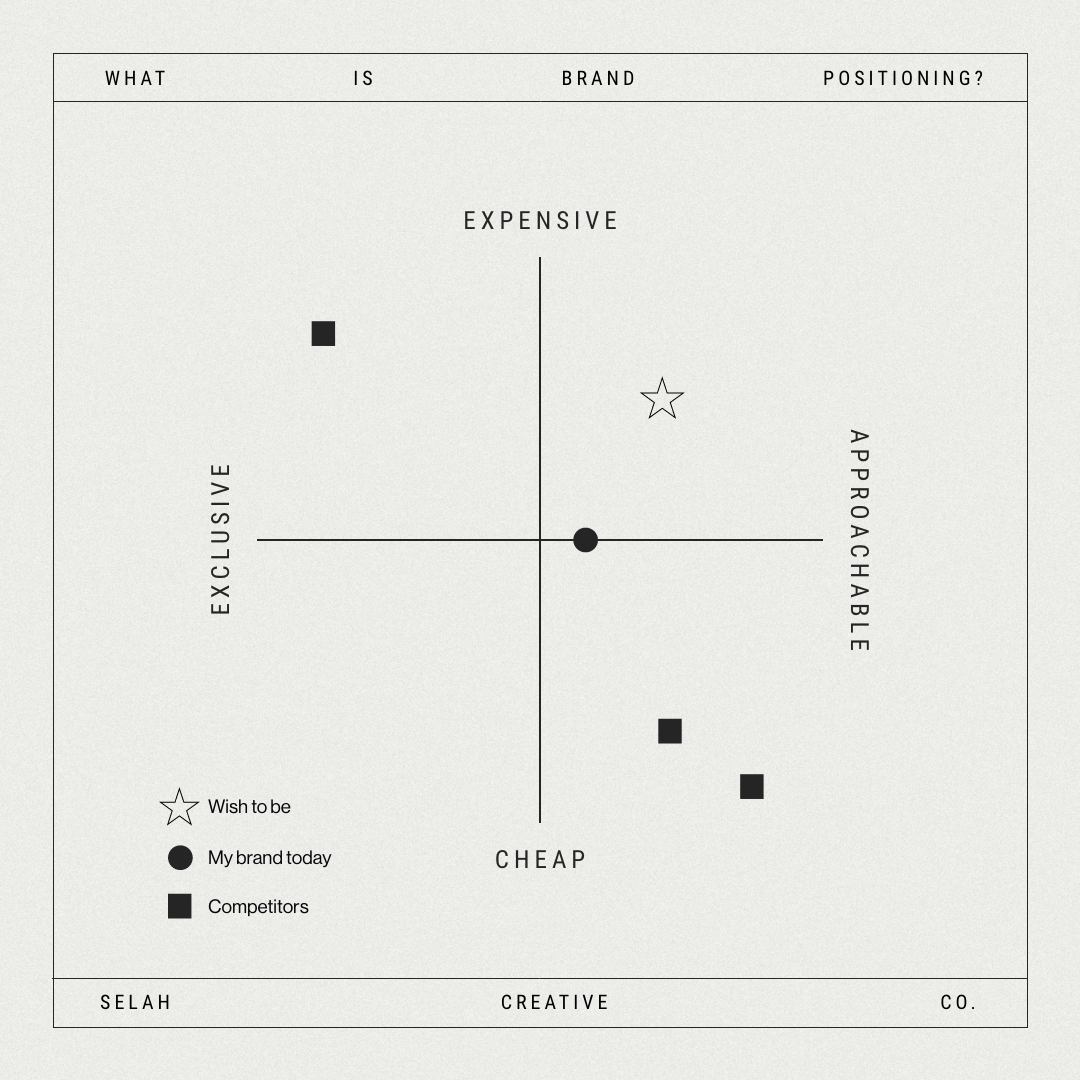What Is the Difference Between Branding and Positioning?
What is the difference between branding and positioning? You may be familiar with the term “branding,” but maybe not so acquainted with the concept of “brand positioning.” Having a branding and positioning strategy is especially crucial in competitive markets since there are alternative options for just about any product or service.
Keep in mind that branding and positioning are complementary, but not synonymous.
In this blog, you’ll find answers to questions like, “What does branding mean?”, “What is brand positioning?”, and the 3 C’s of brand positioning.
Branding vs. Positioning Explained
Let’s begin by defining both brand positioning and branding, so you understand how they differ.
What Does Branding Mean?
Branding is the process of creating a unique image for a company through naming, logo design, typography, voice and tone, taglines, advertising strategies, etc. It’s more visual than brand positioning in marketing. The purpose of branding is to differentiate a company from its competitors.
Branding breaks through the clutter and grabs the attention of your ideal audience. It not only attracts, but great branding touches hearts (as sappy as that sounds).
What Is Brand Positioning?
Positioning in branding is the space your brand takes up in the mind of consumers compared to competitors. Every company holds a unique position (think: reputation) in the marketplace, whether intentional or not. The goal of brand positioning is to be deliberate about taking up more space than the other guys.
Brand positioning is a strategy used to set your business apart. Effective brand positioning happens when your brand is perceived as credible, desirable, and preferable to consumers.
The 3 C’s of Brand Positioning
1. Consumers - Want do they need?
First thing’s first, you need to define who it is you’re speaking to. The best way to do this is by developing ideal client avatars or ICAs. What are their interests? Fears? Desires? Unmet needs? Each of these questions will help you better position your brand in their minds as a favorable solution.
But first, you need to find what the problem or pain point is through a target market analysis.
Sometimes, this looks like surveys, questionnaires, or face-to-face conversations with people who fit the demographic of your ideal client. Once you’ve gained valuable information as to the customer’s unmet needs and pain points, you can begin to position your brand as the solution.
2. Company - What does your brand do best?
Evaluate yourself as a business. What is your competitive advantage? Have you positioned yourself differently than competitors? What is unique to your business? Every company should position itself as an expert in something. Don’t be a jack-of-all-trades.
Think about performing a thorough brand audit on your business:
What do you do better than anyone else in your industry?
How successful are your current marketing efforts?
Are you reaching the right target market?
Are you making a profit?
3. Competition - What do your competitors do best?
Remember, you’re not the only fish in the sea. Everybody has the option to choose one brand over another. Ask yourself what value competitors offer consumers that you may not. Then, perform a competitive analysis to determine where there are gaps in your branding and positioning strategy.
First, identify your competitors. Next, determine their strengths and weaknesses (as well as your own). Finally, position yourself amongst competitors on an X and Y axis. Label the ends of each axis accordingly, depending on your industry (E.g., Expensive, Cheap, Exclusive, Approachable). Then, put a star on the graph where you want to be in the future.
Every decision you make should be motivated by that end goal.
What Is a Brand Positioning Statement?
A simple brand positioning statement lists what your company offers, who your target customer is, and what makes you unique. To do this, begin crafting a brand positioning statement or unique value proposition (UVP) that sets you apart.
Use this framework as a starting point:
(1) YOUR BRAND provides (2) PRODUCT/SERVICE for (3) TARGET AUDIENCE so they can (4) BENEFIT without (5) PAIN POINT. (6) UNIQUE SELLING POINT.
Brand Positioning Statement Example
Selah Creative Co. (SCC) provides strategy-led, bespoke brand and Squarespace website design for service-based entrepreneurs so they can feel confident in the legitimacy of their business without looking like a DIY project. SCC emphasizes the necessity of strategic design thinking at every stage of a project, which informs and confirms every visual aspect of a brand or website from font selection to color palette.
Our brand positioning focuses on the necessity of strategy as a unique selling point, and we can confidently say we’re experts at it. What’s your UVP?
How to Develop a Unique Positioning Strategy
Ready to develop a brand positioning and messaging strategy for your business? Fill out a Client Application! At Selah Creative Co., we offer an intensive, brand strategy workshop that covers everything your brand needs to launch with confidence.
First, you complete a detailed questionnaire that helps us learn more about your business. Then, we jump on a 120-minute brand strategy session [video] where we identify your desired brand aesthetic, ideal clients, values, personality, mission, vision, etc.—unveiling the essence of your brand.
Here’s everything we cover in the session that’s included in your +25 page Brand Strategy Guide takeaway:
Brand Foundations (story, goals, values, target audience, framework)
Brand Insights (mission, vision, positioning, competition, brand personality/archetype)
Brand Messaging (content pillars, primary message, differentiation)
Brand Voice (voice & tone)
Let’s make your brand stand out. Get in touch today!

